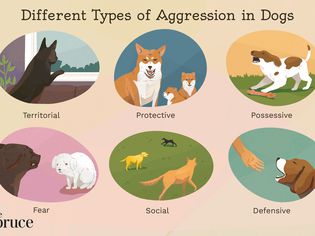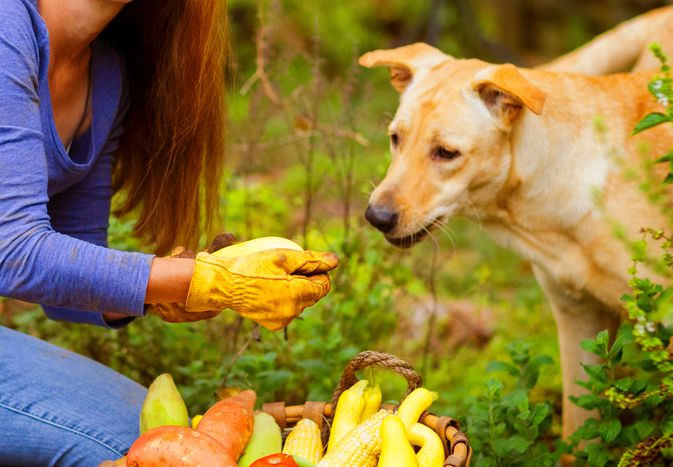From improving digestive health to protecting against cancer, blueberries are often called “superfoods” due to their significant health benefits for us humans. If you’re looking for a nutritious and delicious snack to share with your furry friend, you may wonder, can dogs eat blueberries, too?
The short answer: Yes! While there are some foods that aren’t safe for dogs to eat, our canine companions can enjoy this small, flavorful fruit. However, like other dog-friendly foods, there are some considerations to keep in mind.
We talked to three veterinarians to get their advice, tips, and tricks for safely feeding your dog blueberries.
Meet the Expert
Sarah Gorman, DVM, CCRP, is the managing vet at Small Door Veterinarian.
Sabrina Kong, DVM, is a staff veterinary writer at We Love Doodles.
Rebecca Greenstein, DVM, is a veterinary medical advisor for Rover.
Benefits of Blueberries for Dogs
According to the U.S. Department of Agriculture’s FoodData Central, a cup of blueberries is 84 calories, making this a great low-calorie snack for dogs when fed in appropriate portion sizes. Blueberries also offer several nutritional benefits for dogs, says Sarah Gorman, DVM, CCRP, managing vet at Small Door Veterinarian.
Blueberries are a good source of the following, according to Gorman:
- Antioxidants, which can help fight free radicals and support overall health
- Fiber, which can aid in digestion
- Various vitamins, like vitamins C and K, which can boost immunity and support bone, cognitive, and heart health
There’s substantial evidence that supports the many health benefits of blueberries. Overall, this blue-hued fruit is a natural source of antioxidants, vitamins, and minerals, which can contribute positively to a dog’s diet, says Sabrina Kong, DVM, staff veterinary writer at We Love Doodles.
Risks and Considerations
Despite blueberries being so healthy, it’s essential to limit how much and how often they’re offered to your dog.
In moderation, washed blueberries are absolutely safe for most dogs to eat and make a healthy and tasty snack, says Rebecca Greenstein, DVM, veterinary medical advisor for Rover. She notes that if your dog is on blood thinners or has certain types of bladder stones, it’s best to consult your veterinarian before offering blueberries.
When feeding your canine companion blueberries, she says that any treat should comprise no more than 10 percent of your dog’s daily calorie intake to avoid creating nutritional imbalances. To learn more about your dog's specific daily calorie requirements, she recommends talking to your vet for individualized calculations.
Not only is it important to avoid giving blueberries—or any other treat—in excess to prevent an unbalanced diet and unwanted weight gain, but potentially negative side effects as well.
“It’s best to feed blueberries to dogs in moderation because overfeeding can lead to gastrointestinal upset, such as diarrhea or vomiting, due to their high fiber content,” Gorman says. “Additionally, too many blueberries can contribute to an excess of natural sugars in a dog’s diet, which may not be ideal.”
When introducing new foods into your dog’s diet, make a gradual transition and monitor your pup for any adverse reactions.
How to Feed Blueberries to Dogs
Feeding your furry friend fresh blueberries can be a fun way to add some variety and extra nutrition to their daily meals.
Gorman breaks down appropriate portion sizes for dogs based on their size:
- Toy breeds: 1–2 blueberries per day
- Small breeds: 3–5 blueberries per day
- Medium breeds: 5–10 blueberries per day
- Large breeds: 10–15 blueberries per day
- Giant breeds: 15–20 blueberries per day
If you’d like to incorporate blueberries into your dog’s diet, Gorman and Greenstein recommend:
- Feeding as a standalone, bite-sized treat
- Mixing them into their regular food or adding as a topper
- Freezing them as a refreshing summer treat
- Mashing or blending them into homemade dog treats or snacks with other dog-friendly ingredients (e.g. pupsicles, smoothies, or baked dog treats)
Other Dog-Friendly Fruits
Certain fruits, such as grapes and raisins, are toxic to dogs and should be avoided. Avocados, tomatoes, and cherries can also be harmful.
Fortunately, there are many fruits you can safely share with your four-legged friend! Some fruits that dogs can eat include:
- Apples: Gorman and Kong say apples are rich in vitamins A and C, as well as fiber, which are great for a dog’s digestion and immune system. Make sure to remove the seeds and core before feeding.
- Bananas: “Bananas are high in potassium, vitamins, biotin, and fiber, making them a healthy snack in moderation due to their higher sugar content,” Kong says.
- Blackberries: Blackberries contain vitamins C and K, manganese, and fiber. It’s best to cut these into smaller pieces before offering.
- Cantaloupe: Cantaloupe is packed with vitamins A, B-6, and C. It also contains high doses of beta-carotene, which may benefit your pup’s vision and immune system. Avoid giving the rind.
- Cranberries: Cranberries contain antioxidants, vitamins C and E, and various B vitamins. These can be given raw, cooked, or dried. However, avoid feeding cranberry sauce.
- Kiwi: Kiwi is a good source of vitamins A, C, E, and K. Remove the skin and seeds before feeding.
- Oranges: Oranges are high in vitamin C. However, Gorman advises only offering in small amounts due to the acidity and potential for digestive upset.
- Pears: Pears contain nutrients, such as vitamin C, potassium, fiber, and copper. Make sure to cut a pear into small pieces for your dog—and without the seeds and core.
- Pumpkin: Pumpkin is packed with fiber, which is great for your dog’s digestion. They can eat pureed, cooked pumpkin and canned pumpkin (note: not pumpkin pie filling). Pumpkin seeds are OK to feed.
- Raspberries: Raspberries are a good source of vitamin C, antioxidants, fiber, copper, folic acid, and magnesium. Feed in moderation.
- Strawberries: Gorman says strawberries are packed with antioxidants and fiber. Remove the leaves and stem prior to offering.
- Watermelon: Gorman considers watermelon to be a hydrating treat and notes to be cautious of the seeds and rind.
Greenstein adds that any dog-friendly fruits should be properly washed, given in moderation, and cut into easily chewable pieces.










Comments on " Can Dogs Eat Blueberries?" :